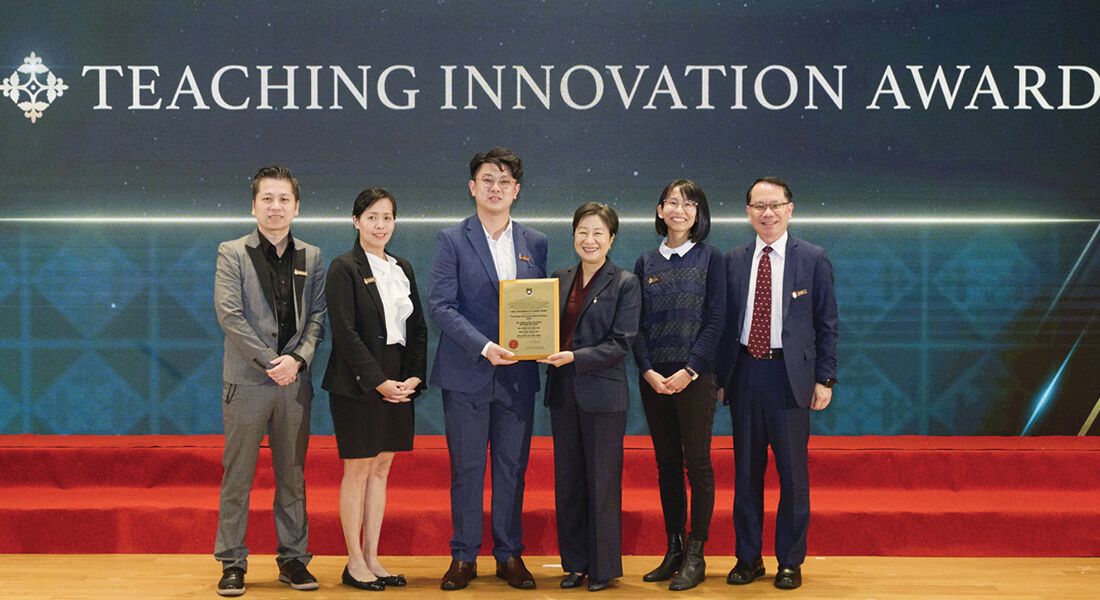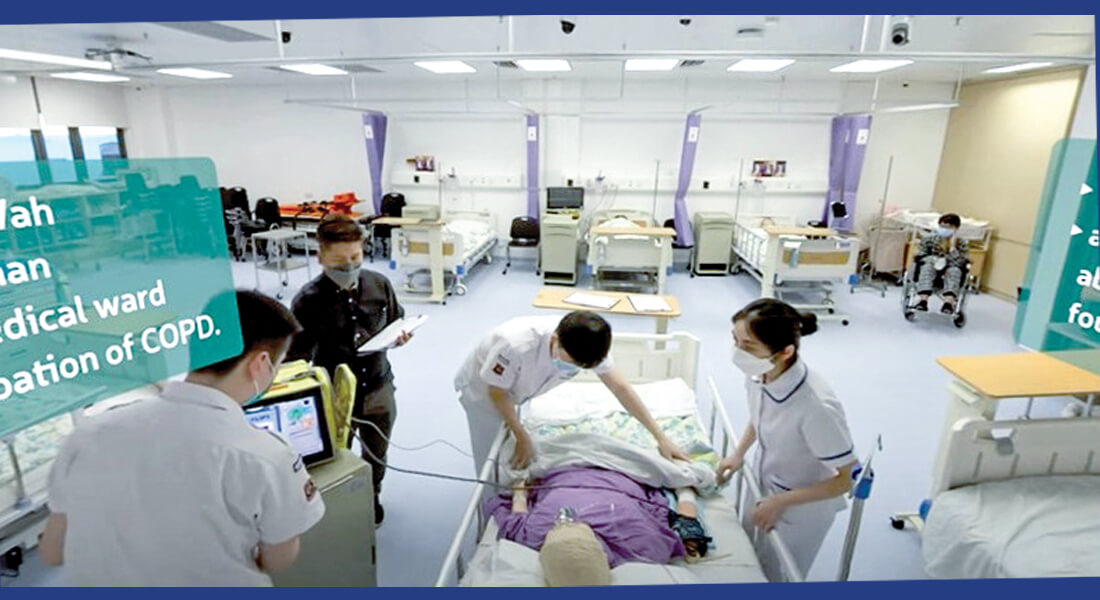
Teaching and Learning
Award-winning Teaching Innovation Crosses Disciplines
Dr John Fung Tai-chun | Senior Lecturer
Senior Lecturer, Dr John Fung Tai-chun, recently won HKU’s Teaching Innovation Award (Teams) for a ground-breaking, cross-disciplinary project that uses a 360 virtual reality (VR) system to open new ways of teaching and learning. He is also the sole recipient of this year’s HKU Outstanding Teaching Award for his body of work.
New technologies are enabling us to create engaging and impactful experiences for students that transform abstract concepts into tangible, real-life learning opportunities and empower them to take charge of their learning journey. One such technology is 360 VR, which I developed with my colleagues and which is integrated into learning management systems.
Our 360 VR is revolutionary because it can be used without a VR headset or goggles to immerse students in learning scenarios that they can navigate around. Once they access videos online, they can drag their mouse around to get a 360-degree view to observe different perspective and viewpoints.
An example of how we use this is in a multi-patient simulation scenario. Nursing students observe CPR being performed, but they are not just watching one action on one patient. There is other activity happening in the scene, too, to more closely replicate a real-life setting. The students are given guiding questions in advance, such as whether they spot any irregularities, and they can timestamp their answers along different parts of the video.
The videos were developed with research assistants and students performing as actors. I also involved students as near-peer or peer teachers, who were trained to help us take students through pre-briefing and debriefing of the 360 scenarios.
The debriefing is a critical aspect of the 360 VR. In 2020, my team and I won another HKU Teaching Innovation Award for our work using virtual simulation in teaching and assessment, which had a robust debriefing process to consolidate students' knowledge and understanding and deepen their learning. It resulted in student improvements in clinical competence, satisfaction and self-confidence.
The current project similarly has had very good results and prepared students for real-world medical challenges. I collected data in a variety of ways, including a randomised control trial and pre- and post-tests, and published the results to demonstrate the value of 360 VR with debriefing.
Another very important part of this initiative is that it has broad applicability beyond just Nursing. We worked with colleagues from the Centre for Applied English Studies and the School of Chinese to develop its application (for instance, by observing group conversations and zooming in to understand the dynamics of the interactions). All Nursing students must do English and Chinese language studies, so we had them use the technology there first before it was introduced in the Nursing programme. One can imagine 360 VR being relevant to other disciplines, too, such as recreating historical events to bring the past to life for students.
The underlying philosophy of 360 VR is to challenge traditional pedagogies and embrace a future where learning is dynamic, interactive and universally accessible. To that end, I am now working on projects comparing 360 VR and generative AI videos where students see a virtual patient with a face and can talk to them through a computer. AI is the future and I hope to see how it can be synergised with 360 VR. Ultimately, the aim is to prepare students for success in the 21st century both in terms of technology use and interacting with the world around them.







